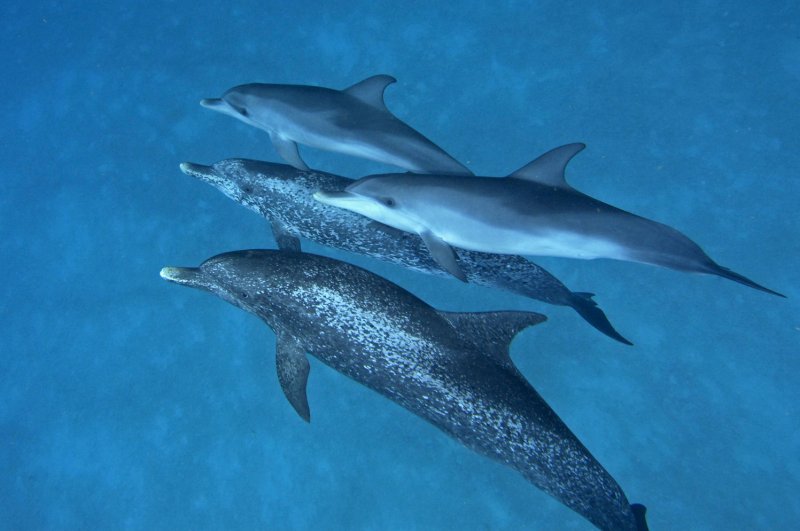Researchers have found evidence of dolphin consumption among precolumbian settlements on the islands off the coast of Panama. Photo by UPI Photo/Joe Marino |
License Photo
PANAMA CITY, Panama, Jan. 7 (UPI) -- Researchers have found more evidence that ancient Panamanian islanders consumed dolphins, but it remains unclear whether these seafaring people systematically hunted the mammals.
Archaeological digs on Pedro Gonzalez Island, part of the Pearl Island archipelago, showed at least 8 percent of the mammal remains found among prehistoric scrap heaps belonged to dolphins. It's the only place in Central America where dolphins have been shown to account for a sizable portion of the local diet.
"This raises intriguing questions," archaeologist Richard Cooke, staff scientist at the Smithsonian Tropical Research Institute, said in a press release. "Were the island's first known inhabitants dolphin hunters or did they merely scavenge beached animals?"
Precolumbian seafarers made the 40-mile trek from the mainland to the Pearl Islands some 6,000 years ago -- most likely in dugout canoes. Remains of their settlements show they were predominately consumers of fish, turtles and shellfish, suggesting they were able fishermen, but shark and dolphin bones are also present.
Researchers found a puncture wound in the skull of one ancient dolphin specimen, but say there's not enough evidence to say for sure whether these early Panamanian islanders hunted dolphins.
The upwelling of nutrient-rich water in the Gulf of Panama brings larges schools of fish -- and the hungry dolphins following them -- close to the shores of the archipelago. But scientists think the fast-swimming dolphins would have been too difficult for the islanders and other precolumbian peoples to track and spear in their canoes.
Did the islanders simply harvest beached dolphins? Cooke and his colleagues don't think beached dolphins are enough to explain the large quantity of dolphin remains found on Pedro Gonzalez Island.
An alternative theory is that the islanders waited for sharks to drive dolphins close to shore and then trapped them using their canoes -- disorienting them with splashing and noise until they were exhausted and ultimately beached.
Researchers shared their theory in a new paper on the latest findings on the islands, published this week in the Journal of Archaeological Science: Reports.
The dolphin-eating people disappeared about 800 years after settling the archipelago. They were resettled by new groups a few thousand years later. Later peoples showed no evidence of dolphin consumption, but Cooke believes they likely were hunting and eating the marine mammal.
"I would argue, though it's speculative, that the retention of dolphin hunting is probably due to an early circum-Pacific maritime adaptation by humans," Cooke explained. "Even though with the data we have we cannot really prove they were hunting. But the age of the site puts it at a time when people all around the Pacific Rim -- in Mexico, Chile and Japan -- were hunting dolphins."















